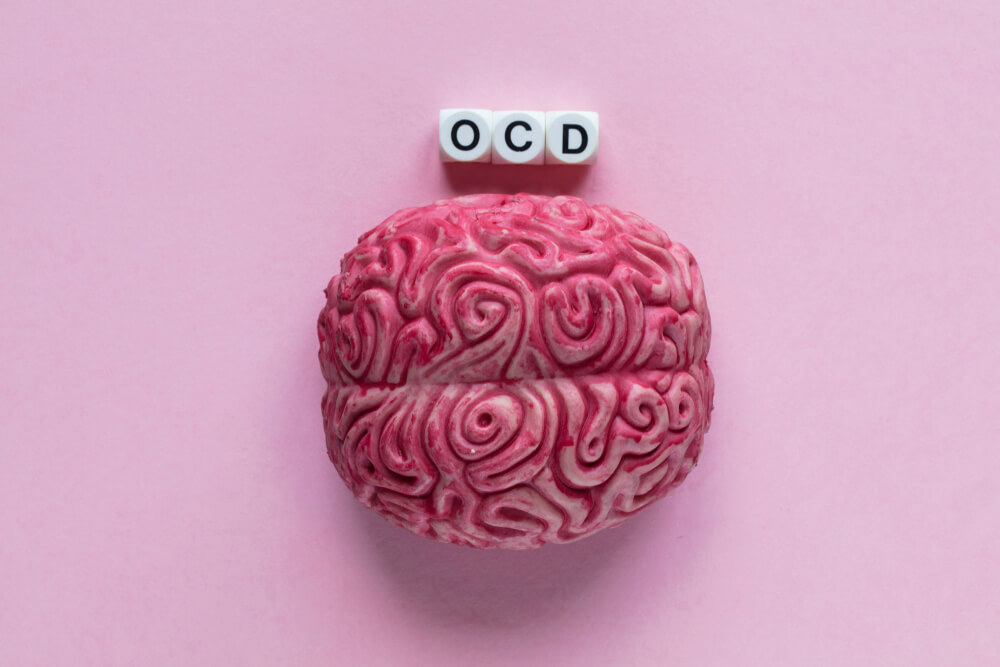Personality Disorders


Escrito y verificado por el psicólogo Bernardo Peña
The human personality is composed of a set of deeply ingrained and stable cognitive, emotional, and behavioral patterns over time. These traits are present in many situations and contexts. So, what are personality disorders?
There are deviations in these patterns, which make them inflexible, rigid, and deviate from what’s culturally acceptable, and they generate great suffering in the individual or those around him.
As we’ll see, personality disorders are difficult to remedy if this problem isn’t worked on thoroughly. In addition, it must be worked for a long time. Psychotherapies won’t change the personality of the patient, but they can make the patient aware of their problems. Also, they promote cognitive, behavioral, and emotional changes.
Personality disorders

Within the realm of personality disorders, we have three well-defined groups:
- Group A (rare or eccentric): Paranoid, schizoid, and schizotypal
- Group B (dramatic, emotional, or unstable): Antisocial, histrionic, narcissistic, and borderline
- Group C (anxious and fearful): Dependent, avoidant, and obsessive compulsive personality disorder
Group A personality disorders (rare or eccentric)
Three personality disorders are included in this group: Paranoid Personality, Schizoid Personality, and Schizotypal Personality.
Paranoid personality disorder
People with paranoid personality disorder show a general pattern of unwarranted distrust of others.
Therefore, they’re unable to trust others and they question their loyalty. Furthermore, they perceive any ambiguous signals as threatening or malicious. This causes them to be on the defensive, hyper-vigilant, and harboring a great grudge inside at all times.

All of the above leads these people to be excessively rigid and lacking in emotion and to remain very distant from others.
This way of being is extraordinarily resistant to change. In this way, people with this disorder won’t seek help due to their feelings of mistrust toward others, and most likely, they’re unaware of their problem.
Some psychoanalytic explanations suggest that these people use projection as a defense mechanism. That is, they deny their own unacceptable impulses and attribute them to others: I have no problem; others do.
You may be interested: The Main Characteristics and Symptoms of Depression
Schizoid personality Disorder
Those with schizoid personality disorder are seen as socially isolated, cold, and indifferent toward others. Therefore, these people are described by others as lonely and sullen.
Generally, they tend to live alone and participate in very few leisure activities. If they have contact with others, it’s limited to the basics because they don’t want or enjoy relationships with others.

They’re also not attracted to the idea of meeting a partner, getting married, and starting a family. They’re also not usually attracted to the idea of being able to have sex with others.
These people have no friends beyond family. In addition, their lack of interest in maintaining other human relationships could cause them to distance themselvs even from their own family.
These people will rarely go to psychotherapy, as they’re not disturbed by the idea of living in isolation. Therefore, they don’t perceive a need to change any aspect of their life.
Schizotypal personality disorder
Those with schizotypal personality disorder display very peculiar (exceedingly rare) thoughts and behaviors. In addition, they have very poor social relationships. They can manifest that they have powers or that they can see what others can’t see. They usually act and dress in a very striking way, and their presence doesn’t often go unnoticed.
Their thinking is marked by a series of distortions or cognitive difficulties. They often show problems like social isolation, inappropriate affection, and very strange thinking and language. In addition, all of this can be accompanied by suspicion of others.

From time to time, some of them may end up going to the psychologist, but for reasons beyond their disorder, such as anxiety, depression, or life crises. In fact, they show an obvious lack of awareness of their personality problem. Sometimes, the prescription of anxiolytics and dynamic therapy together with cognitive-behavioral elements are effective with them.
Group B personality disorders (dramatic, emotional, or unstable)
This group of personality disorders includes four disorders that have a common denominator: They’re very erratic, fickle, and unstable people.
Antisocial personality disorder
People with antisocial personality disorder are characterized by little or no empathy with others. Cold and manipulative, they don’t hesitate to harm or take advantage of others.
In this way, this pattern of antisocial behavior causes them to fail in their adaptation to society. Many have or have had a conflicting history, even with the law.

Their relationship with others is determined by very superficial emotions, with an apparent charm that covers up their lack of ethics and loyalty. Generally, they have no qualms about violating social conventions or the norms that govern society.
Similarly, they don’t feel guilty or responsible for their actions. In addition, they show remarkable impulsiveness and finally, they’re insensitive to punishment.
Rarely will someone with antisocial personality disorder seek psychological help. Most of the time, they’ll go to psychotherapy against their will and by force. Their constant lies and empty promises make therapy with them difficult to carry out.
Borderline personality disorder
Borderline personality disorder is characterized by very marked instability in mood, perception of self, and interpersonal relationships.
People with this disorder show remarkable impulsiveness and a chronic void that’s very difficult to fill. As for their relationships with others, they can go very quickly from idealization to contempt.
This constant emotional instability leads to suffering that’s very difficult to bear, hence their constant self-injurious behaviors or suicide attempts. It should be noted that they’re is enormous comorbidity of this disorder with other psychological disorders (eating disorders, sexual disorders, anxiety, depression…). However, they’re not the cause but rather the effect of this personality pattern.
There appear to be two crucial aspects of borderline personality:
- Difficulty regulating emotions
- Very unstable interpersonal relationships
To address this problem, Linehan (1993) developed dialectical behavior therapy, which teaches these people to regulate their emotions, tolerate distress, prevent self-injurious behaviors, and develop a life plan adjusted to goals and objectives that are important to the person.
Histrionic personality disorder
People with histrionic personality disorder are characterized by wanting to be the constant center of attention. In addition, they’re distinguished by their drama, the exaggeration of their emotions, and seduction as a tool to encourage contact with others.
Histrionic people are usually very superficial and self-centered. Therefore, they quickly become frustrated or angry if they fail to be the focus of attention.
In these cases, the sum of biological factors, such as autonomous excitability, and psychosocial factors, such as infant reinforcement of attention-seeking behaviors or exposure to histrionic parental models, can lead to the expression of symptoms from adolescence.
It should be noted that histrionic personalities are difficult to change. They may seek professional help for other reasons, such as distress, depression, or difficulties in interpersonal relationships.
Only the close therapist-patient relationship and working with the assumptions and cognitive distortions of the patient can help these people gradually achieve the necessary insight regarding their problem.
Narcissistic personality disorder

The main characteristics of people with Narcissistic Personality Disorder are self-centeredness, an exaggerated sense of self-importance, and a lack of empathy.
These people require constant attention and demand that others show them admiration, respect, and subordination. They often daydream, seeing themselves in a fantasy of limitless power or fame.
In this way, some psychoanalytic authors maintain that narcissists actually hide feelings of inferiority, which they reject in themselves and that they unconsciously attribute to others. The truth is that their exacerbated ego, lack of empathy, and exploitation of others disguise a certain artificiality, and, therefore, a personal vulnerability.
Change in these people is very difficult to achieve. In fact, they won’t voluntarily go to psychotherapy. In case of doing so, it’ll be for other reasons, such as symptoms of anxiety, depression, etc.
Establishing an adequate therapist-patient relationship is essential to work on personal appearance and other sensitive issues in relation to the individual’s personality.
Discover: Memory Disorders: Main Features
Group C personality disorders (anxious and fearful)
This group includes avoidant, dependent, and obsessive-compulsive personality disorders. All of them have fear and anguish as their central element.
Avoidant Personality Disorder
People with avoidant personality disorder are characterized by a fear of rejection and humiliation from others. In fact, as with the schizoid, they’re socially isolated.
However, the fundamental difference between the schizoid and the avoidant is that the former neither wants nor desires social contact; while the latter wants it, but feels incapable.

Many researchers point out the similarity of this disorder to social phobia. However, authors such as Marmar (1988) propose a broader explanation. For example, an innate temperament that predisposes to the disorder, coupled with a whole series of experiences of social rejection.
These patients could go to the psychologist’s office of their own free will. However, it’s difficult for them to open up and express all their feelings in therapy. The therapist must establish an adequate professional relationship, which offers a great deal of security and confidence to the patient or they’ll never return to the next treatment session.
Dependent personality disorder
People with Dependent Personality Disorder need others to make their own decisions or help them deal with their own lives.
They lack self-confidence. Furthermore, they subordinate their interests and needs to those of others. In this way, their behavior will be passive and submissive, and they won’t take the initiative of their own free will.

Dependent people operate primarily under two deeply held beliefs :
- They see themselves as unable to get ahead on their own.
- Their thinking and behavior will tend to seek out someone who can take care of them.
Some researchers conclude that this disorder is the result of overprotective or authoritarian parenting styles. These educational styles are supposed to diminish the individual’s ability to cope with their own life.
This is mainly because others have always figured it all out for them or told them exactly what to do without them having to think. In psychotherapy, assertiveness and self-esteem can be worked on with them, taking care not to establish a dependency relationship between therapist and patient.
Obsessive-compulsive personality disorder (OCD)
People with obsessive-compulsive personality disorder (OCD) are characterized primarily by their rigidity, inflexibility, and perfectionism. Obsessed with control, rules, details, and obligations, these people have an absolute lack of spontaneity.

These people relate to the world around them according to their own strict standards. They’re unable to delegate tasks or trust the good work of others. In fact, when they can’t control a situation, they show anxiety, anger, and worry.
They fear mediocrity and losing control. The obsession with details and the perfect execution of things makes these people come to seek professional help for their dissatisfaction or anxious-depressive feelings.
Working with these patients is long and complex. Cognitive-behavioral or psychodynamic therapy is often used.
Conclusions about personality disorders
Here are some conclusions about personality disorders:
- Several criteria are required within the same category or type of disorder to be able to diagnose a specific personality disorder.
- Comorbidities often occur between personality disorders of the same group or with other disorders of different categories, such as addictions.
- The causes of personality disorders are due to biological, psychological, and environmental influences. Therefore, one shouldn’t fall into the absurd reductionism of trying to explain a disorder on the basis of only one dimension.
- Personality disorders are difficult to treat for two main causes: 1) Lack of awareness of the problem and 2) because they’re deeply rooted cognitive, emotional, and behavioral patterns in the individual.
- The most effective treatments for personality disorders include cognitive-behavioral therapies and psychopharmacological support.
The human personality is composed of a set of deeply ingrained and stable cognitive, emotional, and behavioral patterns over time. These traits are present in many situations and contexts. So, what are personality disorders?
There are deviations in these patterns, which make them inflexible, rigid, and deviate from what’s culturally acceptable, and they generate great suffering in the individual or those around him.
As we’ll see, personality disorders are difficult to remedy if this problem isn’t worked on thoroughly. In addition, it must be worked for a long time. Psychotherapies won’t change the personality of the patient, but they can make the patient aware of their problems. Also, they promote cognitive, behavioral, and emotional changes.
Personality disorders

Within the realm of personality disorders, we have three well-defined groups:
- Group A (rare or eccentric): Paranoid, schizoid, and schizotypal
- Group B (dramatic, emotional, or unstable): Antisocial, histrionic, narcissistic, and borderline
- Group C (anxious and fearful): Dependent, avoidant, and obsessive compulsive personality disorder
Group A personality disorders (rare or eccentric)
Three personality disorders are included in this group: Paranoid Personality, Schizoid Personality, and Schizotypal Personality.
Paranoid personality disorder
People with paranoid personality disorder show a general pattern of unwarranted distrust of others.
Therefore, they’re unable to trust others and they question their loyalty. Furthermore, they perceive any ambiguous signals as threatening or malicious. This causes them to be on the defensive, hyper-vigilant, and harboring a great grudge inside at all times.

All of the above leads these people to be excessively rigid and lacking in emotion and to remain very distant from others.
This way of being is extraordinarily resistant to change. In this way, people with this disorder won’t seek help due to their feelings of mistrust toward others, and most likely, they’re unaware of their problem.
Some psychoanalytic explanations suggest that these people use projection as a defense mechanism. That is, they deny their own unacceptable impulses and attribute them to others: I have no problem; others do.
You may be interested: The Main Characteristics and Symptoms of Depression
Schizoid personality Disorder
Those with schizoid personality disorder are seen as socially isolated, cold, and indifferent toward others. Therefore, these people are described by others as lonely and sullen.
Generally, they tend to live alone and participate in very few leisure activities. If they have contact with others, it’s limited to the basics because they don’t want or enjoy relationships with others.

They’re also not attracted to the idea of meeting a partner, getting married, and starting a family. They’re also not usually attracted to the idea of being able to have sex with others.
These people have no friends beyond family. In addition, their lack of interest in maintaining other human relationships could cause them to distance themselvs even from their own family.
These people will rarely go to psychotherapy, as they’re not disturbed by the idea of living in isolation. Therefore, they don’t perceive a need to change any aspect of their life.
Schizotypal personality disorder
Those with schizotypal personality disorder display very peculiar (exceedingly rare) thoughts and behaviors. In addition, they have very poor social relationships. They can manifest that they have powers or that they can see what others can’t see. They usually act and dress in a very striking way, and their presence doesn’t often go unnoticed.
Their thinking is marked by a series of distortions or cognitive difficulties. They often show problems like social isolation, inappropriate affection, and very strange thinking and language. In addition, all of this can be accompanied by suspicion of others.

From time to time, some of them may end up going to the psychologist, but for reasons beyond their disorder, such as anxiety, depression, or life crises. In fact, they show an obvious lack of awareness of their personality problem. Sometimes, the prescription of anxiolytics and dynamic therapy together with cognitive-behavioral elements are effective with them.
Group B personality disorders (dramatic, emotional, or unstable)
This group of personality disorders includes four disorders that have a common denominator: They’re very erratic, fickle, and unstable people.
Antisocial personality disorder
People with antisocial personality disorder are characterized by little or no empathy with others. Cold and manipulative, they don’t hesitate to harm or take advantage of others.
In this way, this pattern of antisocial behavior causes them to fail in their adaptation to society. Many have or have had a conflicting history, even with the law.

Their relationship with others is determined by very superficial emotions, with an apparent charm that covers up their lack of ethics and loyalty. Generally, they have no qualms about violating social conventions or the norms that govern society.
Similarly, they don’t feel guilty or responsible for their actions. In addition, they show remarkable impulsiveness and finally, they’re insensitive to punishment.
Rarely will someone with antisocial personality disorder seek psychological help. Most of the time, they’ll go to psychotherapy against their will and by force. Their constant lies and empty promises make therapy with them difficult to carry out.
Borderline personality disorder
Borderline personality disorder is characterized by very marked instability in mood, perception of self, and interpersonal relationships.
People with this disorder show remarkable impulsiveness and a chronic void that’s very difficult to fill. As for their relationships with others, they can go very quickly from idealization to contempt.
This constant emotional instability leads to suffering that’s very difficult to bear, hence their constant self-injurious behaviors or suicide attempts. It should be noted that they’re is enormous comorbidity of this disorder with other psychological disorders (eating disorders, sexual disorders, anxiety, depression…). However, they’re not the cause but rather the effect of this personality pattern.
There appear to be two crucial aspects of borderline personality:
- Difficulty regulating emotions
- Very unstable interpersonal relationships
To address this problem, Linehan (1993) developed dialectical behavior therapy, which teaches these people to regulate their emotions, tolerate distress, prevent self-injurious behaviors, and develop a life plan adjusted to goals and objectives that are important to the person.
Histrionic personality disorder
People with histrionic personality disorder are characterized by wanting to be the constant center of attention. In addition, they’re distinguished by their drama, the exaggeration of their emotions, and seduction as a tool to encourage contact with others.
Histrionic people are usually very superficial and self-centered. Therefore, they quickly become frustrated or angry if they fail to be the focus of attention.
In these cases, the sum of biological factors, such as autonomous excitability, and psychosocial factors, such as infant reinforcement of attention-seeking behaviors or exposure to histrionic parental models, can lead to the expression of symptoms from adolescence.
It should be noted that histrionic personalities are difficult to change. They may seek professional help for other reasons, such as distress, depression, or difficulties in interpersonal relationships.
Only the close therapist-patient relationship and working with the assumptions and cognitive distortions of the patient can help these people gradually achieve the necessary insight regarding their problem.
Narcissistic personality disorder

The main characteristics of people with Narcissistic Personality Disorder are self-centeredness, an exaggerated sense of self-importance, and a lack of empathy.
These people require constant attention and demand that others show them admiration, respect, and subordination. They often daydream, seeing themselves in a fantasy of limitless power or fame.
In this way, some psychoanalytic authors maintain that narcissists actually hide feelings of inferiority, which they reject in themselves and that they unconsciously attribute to others. The truth is that their exacerbated ego, lack of empathy, and exploitation of others disguise a certain artificiality, and, therefore, a personal vulnerability.
Change in these people is very difficult to achieve. In fact, they won’t voluntarily go to psychotherapy. In case of doing so, it’ll be for other reasons, such as symptoms of anxiety, depression, etc.
Establishing an adequate therapist-patient relationship is essential to work on personal appearance and other sensitive issues in relation to the individual’s personality.
Discover: Memory Disorders: Main Features
Group C personality disorders (anxious and fearful)
This group includes avoidant, dependent, and obsessive-compulsive personality disorders. All of them have fear and anguish as their central element.
Avoidant Personality Disorder
People with avoidant personality disorder are characterized by a fear of rejection and humiliation from others. In fact, as with the schizoid, they’re socially isolated.
However, the fundamental difference between the schizoid and the avoidant is that the former neither wants nor desires social contact; while the latter wants it, but feels incapable.

Many researchers point out the similarity of this disorder to social phobia. However, authors such as Marmar (1988) propose a broader explanation. For example, an innate temperament that predisposes to the disorder, coupled with a whole series of experiences of social rejection.
These patients could go to the psychologist’s office of their own free will. However, it’s difficult for them to open up and express all their feelings in therapy. The therapist must establish an adequate professional relationship, which offers a great deal of security and confidence to the patient or they’ll never return to the next treatment session.
Dependent personality disorder
People with Dependent Personality Disorder need others to make their own decisions or help them deal with their own lives.
They lack self-confidence. Furthermore, they subordinate their interests and needs to those of others. In this way, their behavior will be passive and submissive, and they won’t take the initiative of their own free will.

Dependent people operate primarily under two deeply held beliefs :
- They see themselves as unable to get ahead on their own.
- Their thinking and behavior will tend to seek out someone who can take care of them.
Some researchers conclude that this disorder is the result of overprotective or authoritarian parenting styles. These educational styles are supposed to diminish the individual’s ability to cope with their own life.
This is mainly because others have always figured it all out for them or told them exactly what to do without them having to think. In psychotherapy, assertiveness and self-esteem can be worked on with them, taking care not to establish a dependency relationship between therapist and patient.
Obsessive-compulsive personality disorder (OCD)
People with obsessive-compulsive personality disorder (OCD) are characterized primarily by their rigidity, inflexibility, and perfectionism. Obsessed with control, rules, details, and obligations, these people have an absolute lack of spontaneity.

These people relate to the world around them according to their own strict standards. They’re unable to delegate tasks or trust the good work of others. In fact, when they can’t control a situation, they show anxiety, anger, and worry.
They fear mediocrity and losing control. The obsession with details and the perfect execution of things makes these people come to seek professional help for their dissatisfaction or anxious-depressive feelings.
Working with these patients is long and complex. Cognitive-behavioral or psychodynamic therapy is often used.
Conclusions about personality disorders
Here are some conclusions about personality disorders:
- Several criteria are required within the same category or type of disorder to be able to diagnose a specific personality disorder.
- Comorbidities often occur between personality disorders of the same group or with other disorders of different categories, such as addictions.
- The causes of personality disorders are due to biological, psychological, and environmental influences. Therefore, one shouldn’t fall into the absurd reductionism of trying to explain a disorder on the basis of only one dimension.
- Personality disorders are difficult to treat for two main causes: 1) Lack of awareness of the problem and 2) because they’re deeply rooted cognitive, emotional, and behavioral patterns in the individual.
- The most effective treatments for personality disorders include cognitive-behavioral therapies and psychopharmacological support.
- Echeburúa, E., & Corral, P. (1999). Avances en el tratamiento cognitivo-conductual de los trastornos de personalidad. Análisis y Modificación de conducta, 25(102), 585-614.
- Marmar, C. R. (1988). Personality disorders. In H. H. Goldman (Ed.), Review of general psychiatry (pp. 401–424). Norwalk, CT: Appleton y Lange.
- Millon, T., & Everly, G. S. (1994). La personalidad y sus trastornos: Theodore Millon, George S. Everly, Jr. Martínez Roca.
- Millon, T., Davis, R., Millon, C., Escovar, L., & Meagher, S. (2001). Trastornos de la personalidad en la vida moderna. Barcelona: Masson.
- Peña-Herrera, B. (2018) Psicopatología General. Samborondón: Universidad Espíritu Santo – Ecuador.
Este texto se ofrece únicamente con propósitos informativos y no reemplaza la consulta con un profesional. Ante dudas, consulta a tu especialista.







